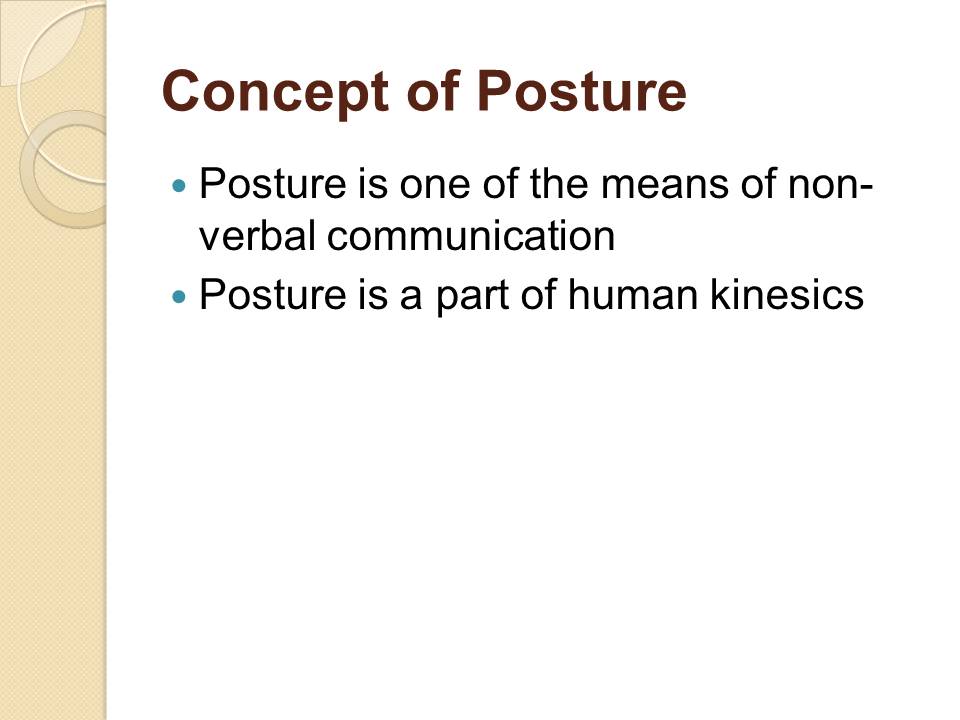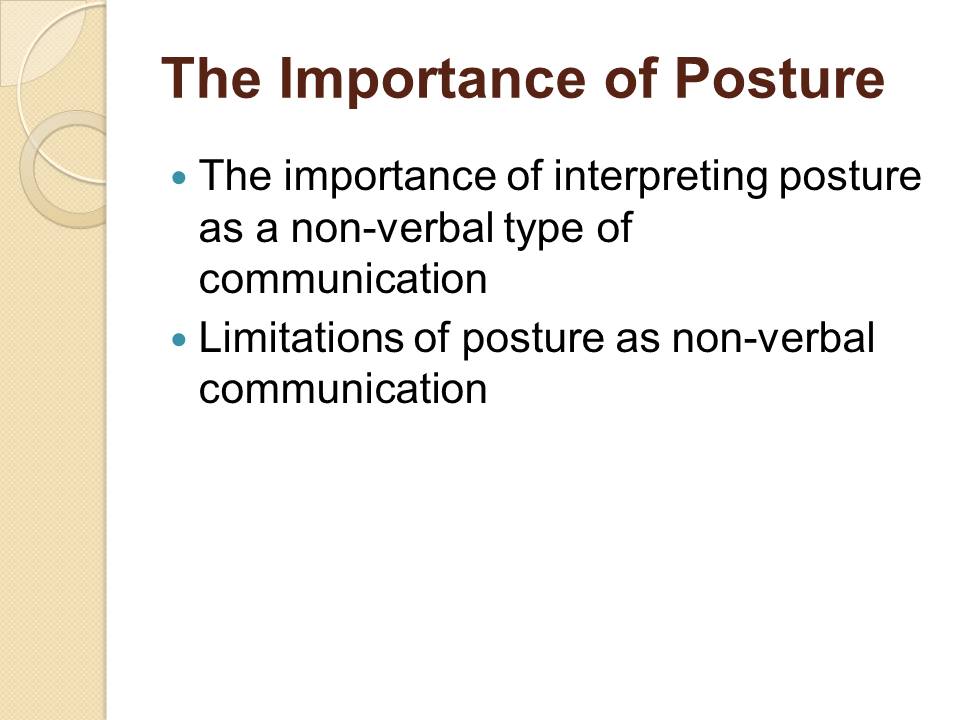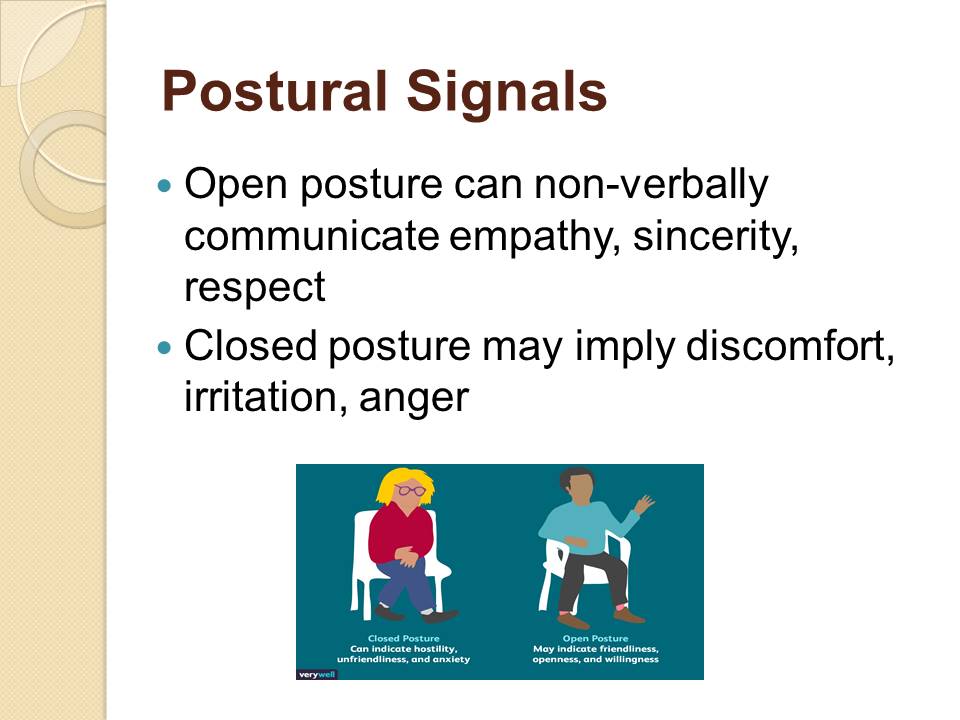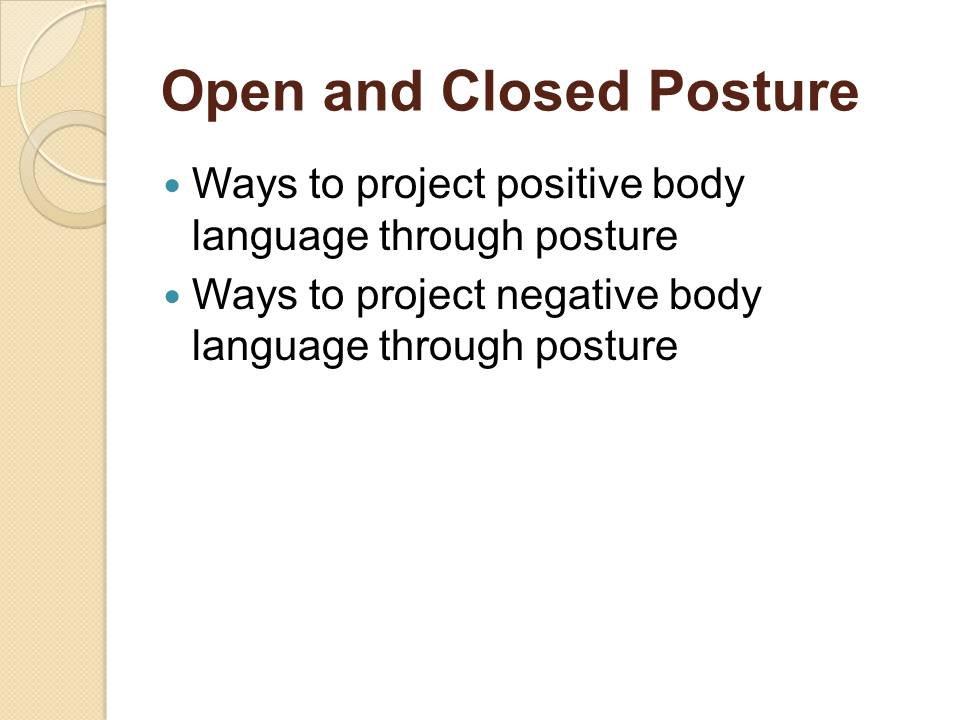Concept of Posture
- Posture is one of the means of non-verbal communication.
- Posture is a part of human kinesics.
Communication is the exchange of information between people, the primary purpose of which is to develop common meaning, a shared point of view, or agreement in different situations. Non-verbal communication plays a crucial part in communication and understanding. It uses paralinguistic methods of information delivery – loudness of speech, tone of voice, gestures, facial expressions, postures.
Kinesics comes for the the word kinesis, which means “movement” and refers to the study of body’s physical movements (Hans & Hans, 2015, p.47). Posture as part of kinesics is a very powerful tool that helps people communicate non-verbally. It is used to convey moods or emotions as well as to emphasize the verbal communication. Kinesics movements such as posture are very often performed on a subconscious level.

The Importance of Posture
- The importance of interpreting posture as a non-verbal type of communication.
- Limitations of posture as non-verbal communication.
Body language, in comparison with other verbal means of communication, is unique. Assuming that it carries between 60 to 80 percent of the information transmitted to another person, it is easy to see the importance of interpreting this method of contact. Many people have experienced a feeling of vague anxiety when communicating with another person subconsciously sensing the insincerity of the words conveyed. Posture is a part of any relationship, regardless of awareness.
Posture as non-verbal communication is not free of certain limitations. It is learnt in a cultural context; therefore, it may not be universal. Most of the time, people unconsciously and habitually engage in non-verbal communication by moving the various parts of the body. Thus, it lacks formality since there is no particular structure or rules.

Postural Signals
- Open posture can non-verbally communicate empathy, sincerity, respect.
- Closed posture may imply discomfort, irritation, anger.
These two forms of posture can convey the level of confidence, status, or friendliness of one person to another. In an open position, a speaker is usually seated or standing directly facing their partner, with their hands either apart or on the arms of a chair. This stance as a rule non -verbally communicates openness, respect, empathy, or sincerity.
The very first sign of a closed posture is crossed arms. A person seated in a closed position usually has the legs crossed and is positioned at a slight angle from the person they are talking to. This non-verbal communication sends negative signals, implying annoyance, boredom, irritation, or disinterest.

Open and Closed Posture
- Ways to project positive body language through posture.
- Ways to project negative body language through posture.
Using a positive body language may add strength to the messages or ideas people are trying to convey. Having an open posture means sitting or standing upright, with legs uncrossed. This is the stance of a person who wants to have a conversation. However, if someone has uncrossed legs but leans forward and puts his elbows on his thighs, it may suggest that the person is worried about something.
Open arms usually indicate a frankness of opinion and present an open and honest image. Very often, we politicians apply this method, in addition to using gestures such as waving people and raising their arms with open palms as a sign of trust and faith. By putting arms on your hips, however, a person may subconsciously communicate aggression or a desire to dominate.

Mirroring
- Mirroring is an effective way to enhance connection.
- Mirroring in a workplace.
Mirroring body language is an effective means to build mutual understanding and bond. Copying the person with who you are talking to gains a higher level acceptance and helps build trust. It is worth mentioning that if someone intentionally assumes a particular body posture that is characteristic of a specific emotion, it is likely that the person will start experiencing feelings connected to that emotion. For example, assuming a confident body posture (straight back, shoulders pulled away from the ears, uncrossed arms, and legs) makes one start feeling confident and self-assured.
Mirroring in the workplace is very positive when trying to establish contact and understanding quickly. However, a person in a subordinate position, mirroring their superior’s posture, may be viewed as arrogant and rude.

The Power of Mindful Posture
- Positive body posture as a key to successful public speaking.
- Power poses.
Body posture is a powerful tool for interacting with others, especially in a speech or presentation. It is often used by politicians and public speakers, which means that it is a part of non-verbal communication that can also be trained. The audience can make decisions about a person based in large part by what they see. It is useful to practice the so-called “power poses” (arms on hips and legs wide apart, or hands on the table, body leaning forward) before certain social events such as a job interview or business negotiations. Power posing increases the levels of testosterone and lowers cortisol, responsible for stress, thus, giving the speaker a higher sense of self-confidence and power.

Reference
Hans, A., & Hans, E. (2015). Kinesics, haptics and proxemics: aspects of non-verbal communication. IOSR Journal of Humanities and Social Science, 20(2), 47-52. Web.